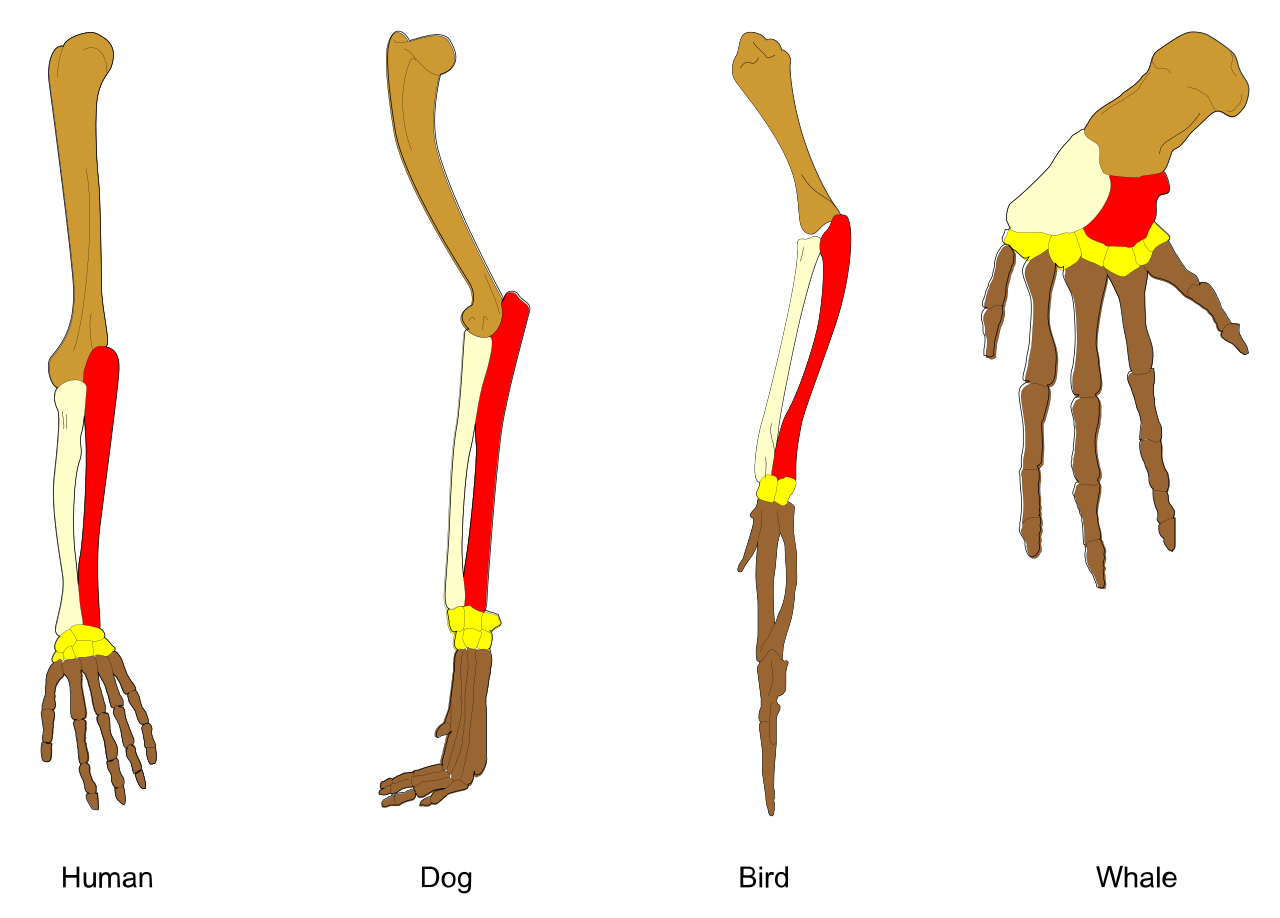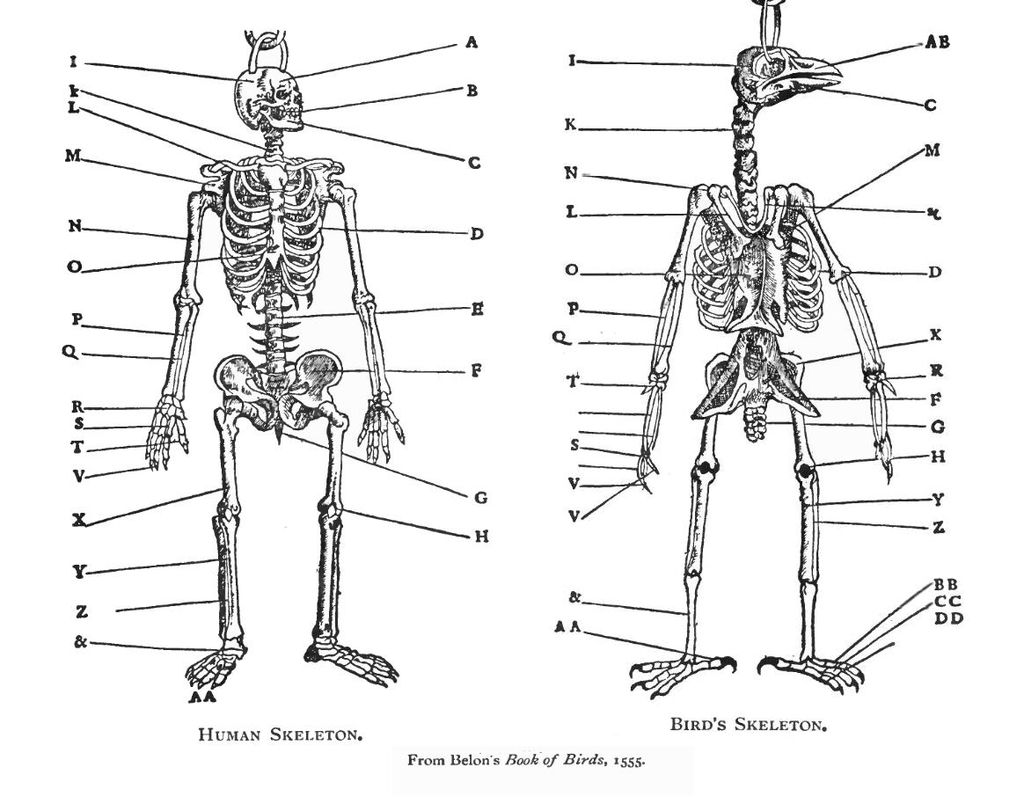Search Dictionary
Version history
- Current: Mar 23, 2021
- Oct 07, 2020
Homologous
Semantically “homologous” means “sharing something.”
In biology, body structures are “homologous” to each other when 1) these structures are observed in several different species, and 2) these structures are inherited from a common ancestor.
The figure below shows skeletons of human, dog, bird, and whale [4]. Holomogous bones are shown in the same color.

Bones in the same color are homologous to each other although they are not very similar in morphology.
Genes and proteins can also be homologous when they share a common ancestor. In contrast to body structures, genes frequently duplicate within a genome of a single species, creating several types of homologous genes.
Definitions in the literature
- Homologous: Describing a character that is shared by a group of species because it is inherited from a common ancestor [2].
- Body parts that appear similar in separate linages because they evolved in a common ancestor are called homologous structure [1].
- Having the same relation, relative position, or structure [3].


